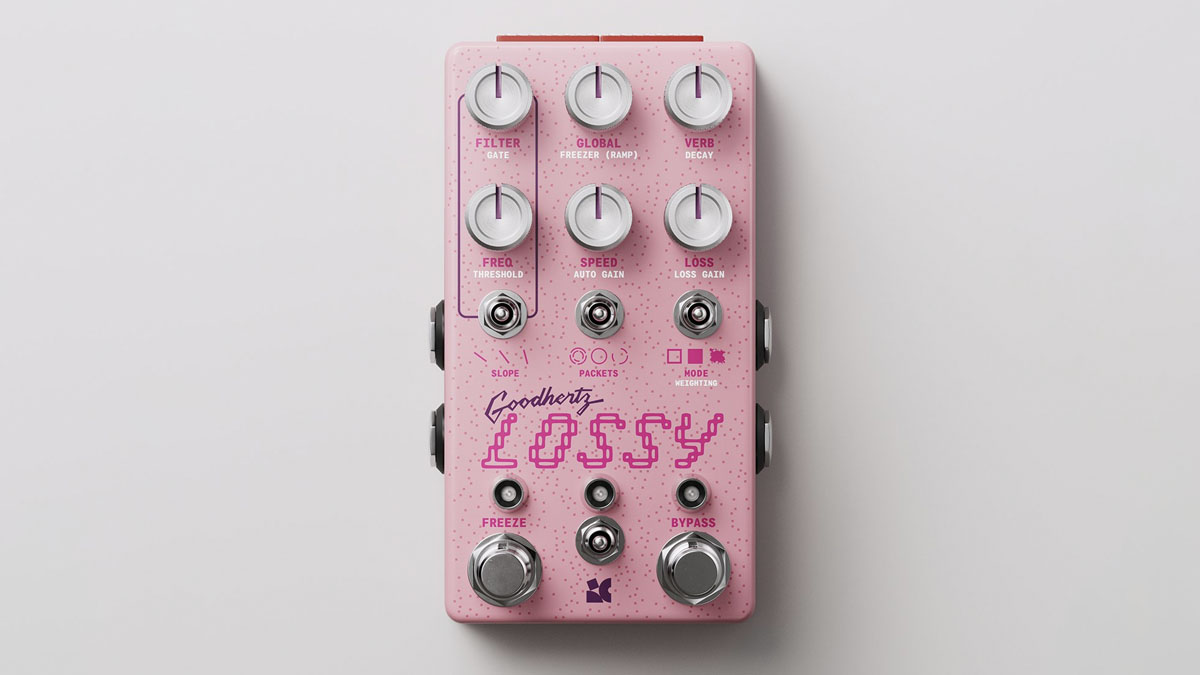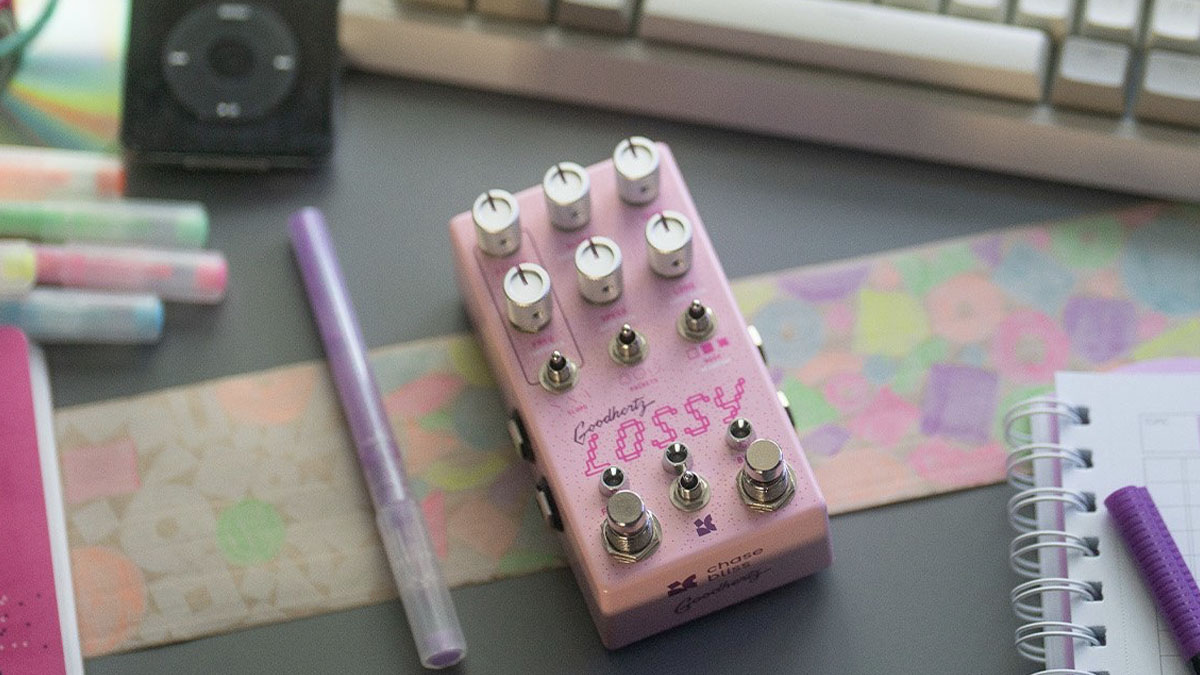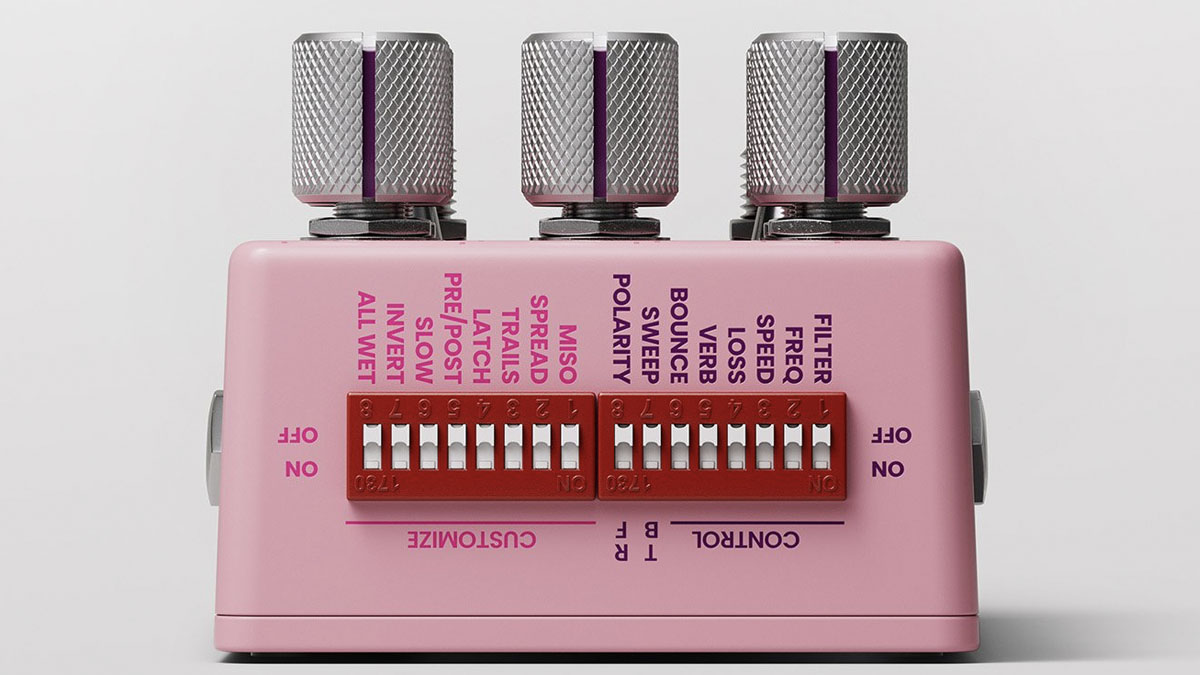Chase Bliss teams up with Goodhertz for the Lossy, a pedal to add “all the nasty and beautiful mistakes of heavily deconstructed digital audio” to your guitar tone
The plugin much-loved by lo-fi texturalists has been reworked and expanded and placed in a pedal, and there are some truly fresh sounds to be had, spaced out, weird and dreamy

In a world awash with Tube Screamer clones, innumerable versions of the same fuzz pedal, you can always count on Chase Bliss to do something different, and Lossy – a two-hander with VST plugin experts Goodhertz – is something different indeed.
Lossy is a guitar effects pedal for dialling in lo-fi textures and digital artefacts of the ‘90s and ‘00s, or, as Chase Bliss puts it, it is “all the nasty and beautiful mistakes of heavily deconstructed digital audio in an easy-to-tweak real-time pedal.”
Think of it as a digitally inspired kissing cousin of Chase Bliss’s Generation Loss, which added various voicings of mechanical tape distress to your sound – and as such, Lossy should be very much up the alley for any soundscape artist looking to put some spaced out tones into mix.
Where Generation Loss was all about tape, this is based on the digital formats that came later; the mp3 audio “smoosh” on audio CD-Rs, the audio processing that goes in a videoconferencing call. All the strange ghosts-in-a-machine quirks of early digital.

While Lossy effectively takes the Goodhertz plugin and puts it in a pedal, the whole project involved redesigning things from the ground up, with Chase Bliss taking the the opportunity to expand the features, with some new modes, upgrades – including all wet mode, a Spectral Freeze mode that tracks your playing, allowing players to choose how it changes over time.
It could be deployed as a pad, a “resonant accompaniment” under what you are playing, or you can play around with it yield some truly weird sounds.
Weird is what we are looking for here. Weird but usable, recreating the glitches and strange echoes of malfunctioning digital tech to harness their musical potential.
Want all the hottest music and gear news, reviews, deals, features and more, direct to your inbox? Sign up here.
There are three voicings in the Loss section of the pedal, which is where the deconstruction of your sound happens.
Standard mode is for low-rate mp3 vibes with “lossy data compression”. Inverse offers a brighter and thinner texture. Phase Jitter replicates strange digital noises from imperfect clocking and other mishaps, hiss, fizz and so forth.
Each mode is selectable by toggle-switch and described by Chase Bliss as offering “submerged sparkles, feathery plunks, shifting digital clouds” and more harmonically interesting content besides. There is a routable reverb with a filter control to adjust its spread, widening it, softening it, playing around with the sense of space.
There is a three-way toggle for selecting Packet Loss simulations, so you can make it sound like you are playing electric guitar over a bad dial-up connection, glitches and all. There is a lot to explore here. As with the best of Chase Bliss’s designs, you’ll want to sit down with the manual, clear a couple of days at the weekend and get to know the controls.
Helpfully, the manual instructs you where best to start out from. The options could be bamboozling. Thankfully, the controls aren’t. Of course, there are a number of dip-switches on the top of the pedal. But the main dials and footswitches look easy enough to navigate.
There is a footswitch to bypass/engage the effect and activating the onboard noise gate, and there is another footswitch for the Freeze function. As for dials, you have a Global control, which increases the intensity of everything, and has a secondary function for controlling the ramping speed.
The Speed dial controls the rate of both Loss and Packet Loss effects, and the update rate of the Spectral Freeze effect. The Loss dial controls the depth of Loss and Packet Loss effects.
The Filter dial controls the width of the filter, fully counterclockwise it is off. Freq controls the filter’s range while the Slope three-way toggle selects 6dB, 24dB and 96dB slope of the filter, with each adding more resonance to the filter’s sound. Verb, meanwhile, controls the wet/dry mix of the reverb, and if you select the All Wet dip-switch then this behaves as an analogue mix dial.


There are a host of hidden features, all of which sound pretty useful – including reverb decay, Freezer balance between live and frozen signals, threshold for the onboard limiter.
To access these features, hold down both footswitches until the LEDs illuminate green. To get a better idea of how this actually sounds – and it sounds pretty good – check out the demo videos above.
The Lossy is available now, priced $399. See Chase Bliss for more details.
Jonathan Horsley has been writing about guitars and guitar culture since 2005, playing them since 1990, and regularly contributes to MusicRadar, Total Guitar and Guitar World. He uses Jazz III nylon picks, 10s during the week, 9s at the weekend, and shamefully still struggles with rhythm figure one of Van Halen’s Panama.
